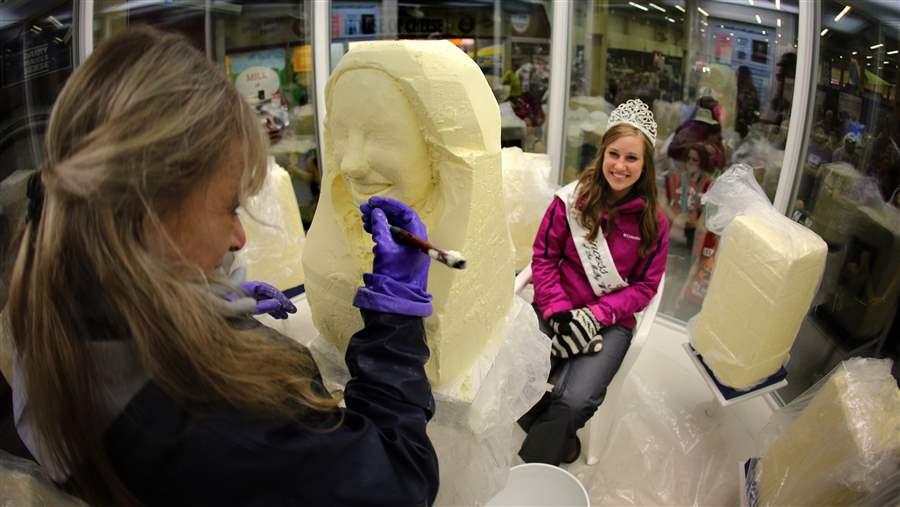By MARSHA MERCER
Since Jimmy Carter was mocked for quoting his
13-year-old daughter Amy on nuclear proliferation, presidents have been careful
about citing their daughters’ views on issues.
In a debate with Ronald Reagan a week before the
1980 election, President Carter said he’d asked Amy what was the most important
issue, and, “She said she thought nuclear weaponry and the control of nuclear
arms.”
Carter intended to use the conversation to personalize
the nuke threat and show that it affects all ages, but most commentators
hooted. He lost his re-election bid and there was not another daughter in the
White House until Chelsea Clinton moved in with her parents in 1993.
Every election since 1992, though, voters have
chosen a president with daughters, and the girls influence the dad-in-chief.
“I’ve got two
daughters – I care about making sure these streets are safe,” President Barack
Obama said Tuesday in Chicago as he called for tougher gun control measures.
When his daughter Malia suffered asthma as a
4-year-old, the experience influenced his views about the environment as well
as health insurance, Obama has said. Because the family had good health
insurance, “we were able to knock (the asthma) out early.”
Obama has made
climate change and health insurance priorities of his presidency.
Malia is now 17 and Sasha, 14. Dinner table
conversations helped change his mind to support same-sex marriage, he said. The
girls have friends whose parents are same-sex couples and they could not
understand why those parents should be treated differently.
“It doesn’t
make sense to them, and, frankly, that’s the kind of thing that prompts a
change in perspective,” Obama said in a 2012 interview with ABC News.
The White House isn’t the only place where
daughters’ opinions count. Academic research is mounting that daughters affect
decisions in corporate boardrooms, courtrooms and in Congress.
Companies run by chief executives who have daughters
have stronger corporate social responsibility ratings and spend more of their
net income on corporate social responsibility than do companies whose CEOs have
sons, the November issue of Harvard Business Review reports.
For example, companies led by CEOs with daughters do
more about and spend more on workforce diversity, employee relations and
environmental stewardship, Henrik Cronqvist of the University of Miami and
Frank Yu of China Europe International Business School found.
An earlier study found that when a member of
Congress has a daughter, the representative is more likely to vote liberally,
particularly on reproductive rights.
“Such a
voting pattern does not seem to be explained away by constituency preferences,
suggesting that not only does parenting affect preferences, but also that
personal preferences affect legislative behavior,” Yale economist Ebonya
Washington wrote in a 2007 paper.
After her landmark work, researchers studied the
“daughters effect” on federal appeals court judges.
“Judges with
daughters consistently vote in a more feminist fashion on gender issues than
judges who have only sons,” Adam N. Glynn of Emory University and Maya Sen of
Harvard University, wrote in an article published in January in American
Journal of Political Science. Male Republican judges seem to be driving the
trend, they said.
None of the studies
looked closely at whether the gender of the CEO, judge or member of Congress
matters more than that of his or her children, although researchers suspect it
does.
After 22 years with First Daughters, voters next
November will decide whether to extend or end girls’ long run in the White
House.
Among the 2016 Republican presidential contenders, Donald
Trump has two daughters and three sons ranging in age from 37 to 9. Marco Rubio
has two daughters and two sons, while John Kasich has twin daughters,and Ted
Cruz has two little girls.
Ben Carson has sons, and Jeb Bush has two sons and a daughter, all of them
grown.
Among Democrats, Hillary Clinton’s daughter has a
daughter, while Martin O’Malley has two daughters and two sons. Bernie Sanders
has a grown son.
In 2012, you may recall, voters rejected Republican
Mitt Romney, who has five sons and no daughters. Coincidence, you say?
Sure. But presidential candidates with
daughters do have a good track record.
You likely won’t hear any of the candidates quoting
their teenage daughters on nuclear arms this campaign season, but watch for the
effect of daughter power if a candidate with girls is elected.
© 2015 Marsha Mercer. All rights reserved.
NOTE: An earlier version said Jeb Bush had only sons. This has been corrected to include a daughter.
NOTE: An earlier version said Jeb Bush had only sons. This has been corrected to include a daughter.
30


